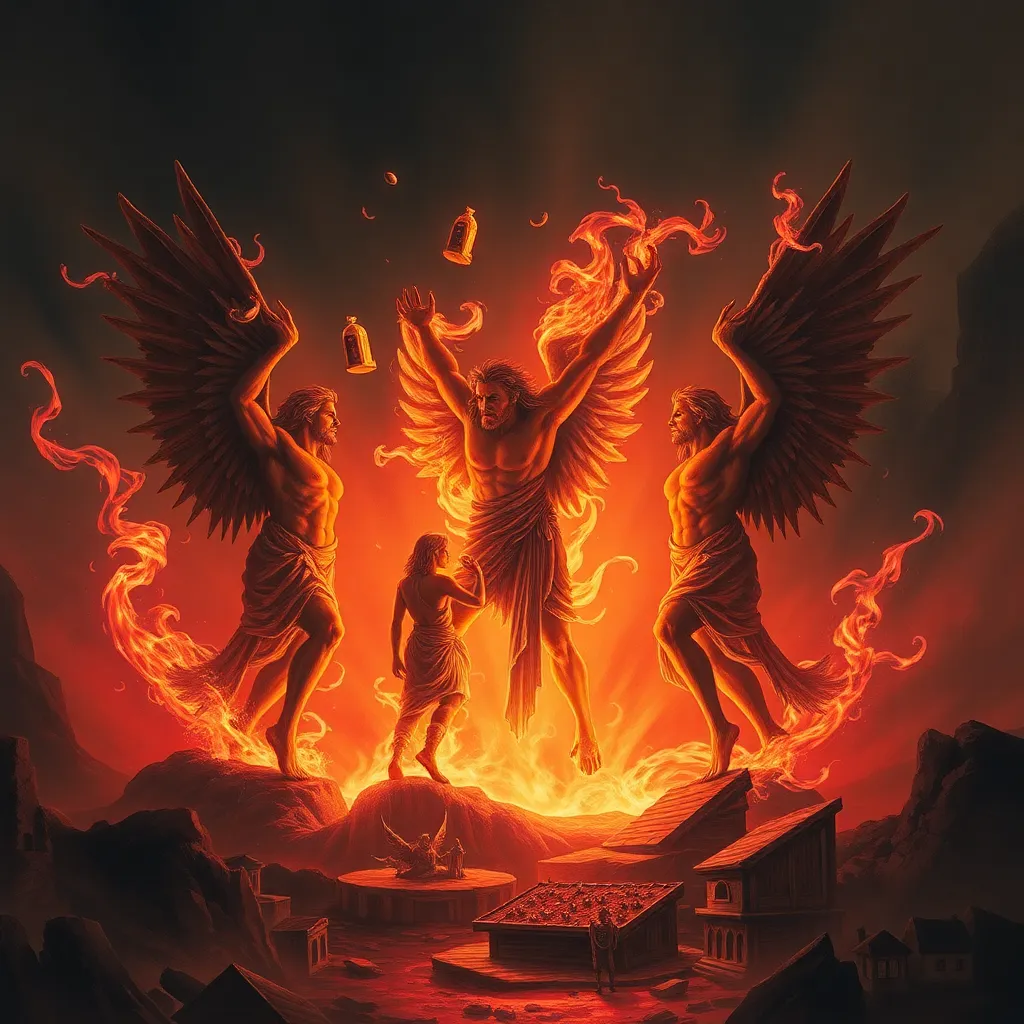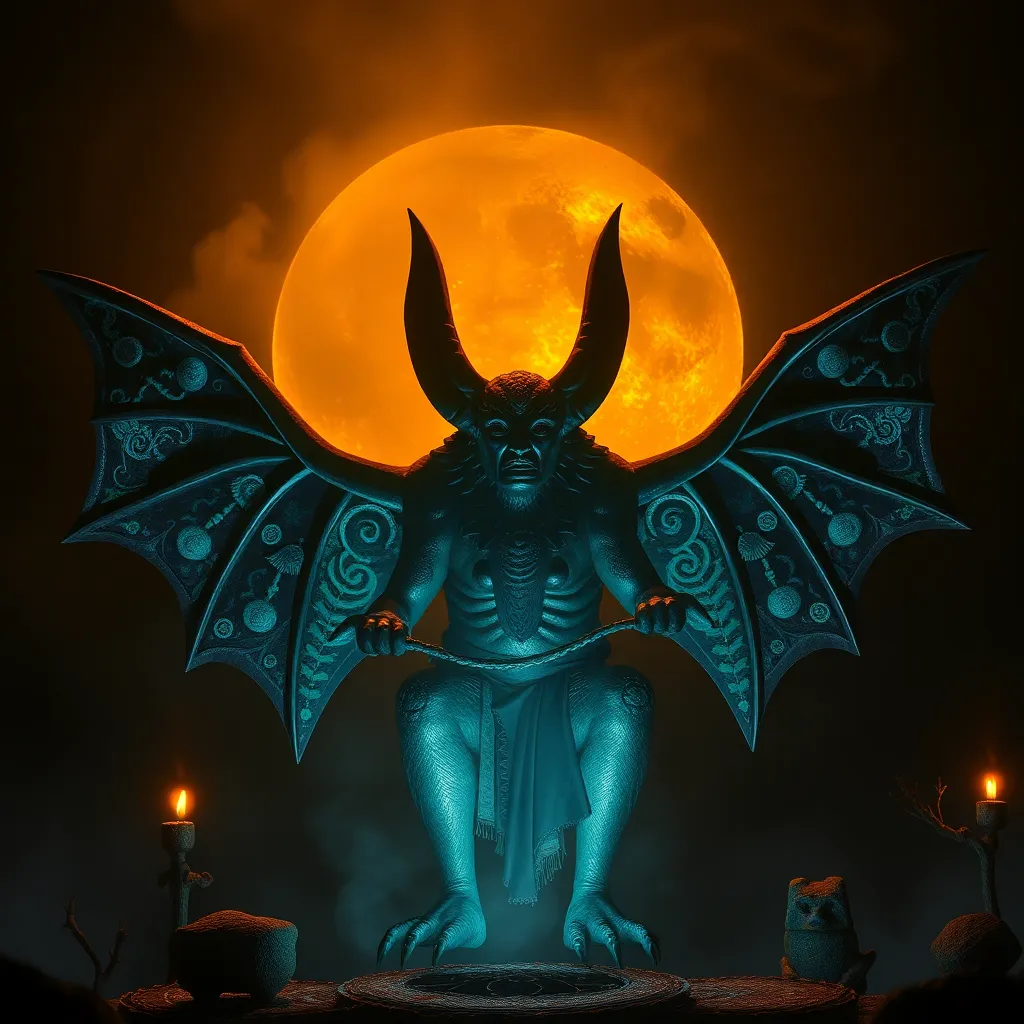Orestes and the Furies: A Tale of Matricide and Justice
I. Introduction
The story of Orestes and the Furies is a compelling narrative that explores the dark themes of matricide, revenge, and the quest for justice. Rooted deep in Greek mythology, this tale illustrates the complex interplay between personal vengeance and societal laws, revealing the moral dilemmas faced by its characters.
Orestes, the son of Agamemnon and Clytemnestra, becomes a tragic figure driven to avenge his father’s murder, leading to his own tragic fate. The significance of this story lies not only in its dramatic events but also in its reflection of ancient Greek values surrounding justice and morality. The themes of justice, revenge, and moral conflict are intricately woven throughout the narrative, prompting audiences to contemplate the nature of right and wrong.
II. Background of the Myth
The myth of Orestes is set against the backdrop of the cursed House of Atreus, a lineage marked by betrayal, murder, and divine retribution. This family history is rife with tragedy, beginning with Tantalus, who was punished for his crimes against the gods, and leading to a cycle of vengeance that ensnares subsequent generations.
Key characters in this saga include:
- Orestes: The son of Agamemnon, who seeks to avenge his father’s death.
- Clytemnestra: Orestes’ mother, who murders her husband Agamemnon.
- Agamemnon: The king who sacrifices his daughter Iphigenia to appease the gods, paving the way for his own demise.
- The Furies: Vengeful deities who pursue Orestes after he commits matricide.
The context of the Trojan War and its aftermath further complicates the narrative. Agamemnon’s return home from the war is marked by betrayal, as Clytemnestra conspires with her lover, Aegisthus, to murder him. This act sets off a chain reaction of revenge that ultimately leads Orestes down a dark path.
III. The Act of Matricide
Orestes’ motivations for killing Clytemnestra stem from a deep sense of duty to his father and the need to restore familial honor. Guided by the Oracle of Delphi, Orestes believes that avenging Agamemnon’s death is justified and necessary. However, this act of matricide carries profound moral implications, as it challenges the very foundations of familial loyalty and love.
The emotional and psychological consequences of matricide weigh heavily on Orestes. Although he initially feels a sense of relief and fulfillment in avenging his father’s death, he soon becomes tormented by guilt and the relentless pursuit of the Furies. This internal conflict illustrates the tragic complexity of his character, as he grapples with the consequences of his actions.
IV. The Role of the Furies
The Furies, also known as the Erinyes, are ancient deities who embody vengeance and are tasked with punishing wrongdoers. Their role in the myth is crucial, as they relentlessly pursue Orestes following the murder of Clytemnestra. The Furies symbolize the inescapable nature of guilt and the idea that one cannot escape the consequences of their actions.
As Orestes flees from their wrath, the Furies represent the old ways of justice, rooted in personal vengeance and blood feuds. Their pursuit of Orestes serves as a reminder that while he may have avenged his father, he has also unleashed a cycle of violence that cannot easily be resolved.
V. Themes of Justice and Retribution
The complex nature of justice is a central theme in the story of Orestes and the Furies. Orestes’ actions raise questions about the morality of revenge and whether it can ever lead to true justice. As he faces the Furies, he becomes embroiled in a larger conflict between old and new forms of justice.
Orestes’ trial, as depicted in Aeschylus’ “Oresteia,” serves as a turning point in the narrative. This trial represents the transformation of vengeance into a legal framework, where the principles of order and civilization begin to supplant the chaotic cycle of retribution. The trial highlights the struggle to define justice in a world where personal grievances often lead to bloodshed.
VI. The Trial of Orestes
The trial of Orestes takes place in Athens, presided over by the goddess Athena, with Apollo as his advocate. The jury consists of Athenian citizens, representing the community’s voice in matters of justice. This trial not only serves as a resolution to Orestes’ fate but also symbolizes the evolution of Greek society’s understanding of justice.
Key players in the trial include:
- Apollo: The god who supports Orestes, arguing that he acted under divine command.
- Athena: The goddess who introduces a new legal system, advocating for a balanced judgment.
- The Jury: A group of Athenian citizens who must decide Orestes’ fate, reflecting the complexities of human judgment.
The outcomes of the trial are significant. Orestes is acquitted, marking a shift towards a more civilized approach to justice. This verdict not only spares Orestes from punishment but also establishes the principle that reason and law can prevail over vengeance.
VII. Moral and Philosophical Questions
The tale of Orestes and the Furies raises profound moral and philosophical questions about the nature of justice versus revenge. It challenges readers to consider the implications of taking justice into one’s own hands and the potential for a cycle of violence.
Additionally, the story reflects gender roles and their impact on the narrative. Clytemnestra’s character defies traditional gender expectations, as she takes control of her fate through murder. This inversion of roles complicates the understanding of justice and morality within the context of the myth.
Furthermore, the evolution of moral understanding in ancient Greece is evident in the transition from personal vendetta to a more structured legal system, highlighting the societal advancement in concepts of justice.
VIII. Conclusion
Orestes’ journey through matricide and his subsequent pursuit by the Furies encapsulates the complexities of justice and the human condition. The tale serves as a powerful exploration of the interplay between fate and free will, highlighting the consequences of our actions.
The enduring relevance of this myth in modern society lies in its exploration of justice, vengeance, and moral conflict. As we navigate our own ethical dilemmas, the story of Orestes and the Furies continues to resonate, prompting reflection on what it means to seek justice in an imperfect world.
Ultimately, this myth serves as a timeless reminder of the struggles inherent in the human experience, where the quest for justice is often fraught with moral ambiguity and emotional turmoil.




